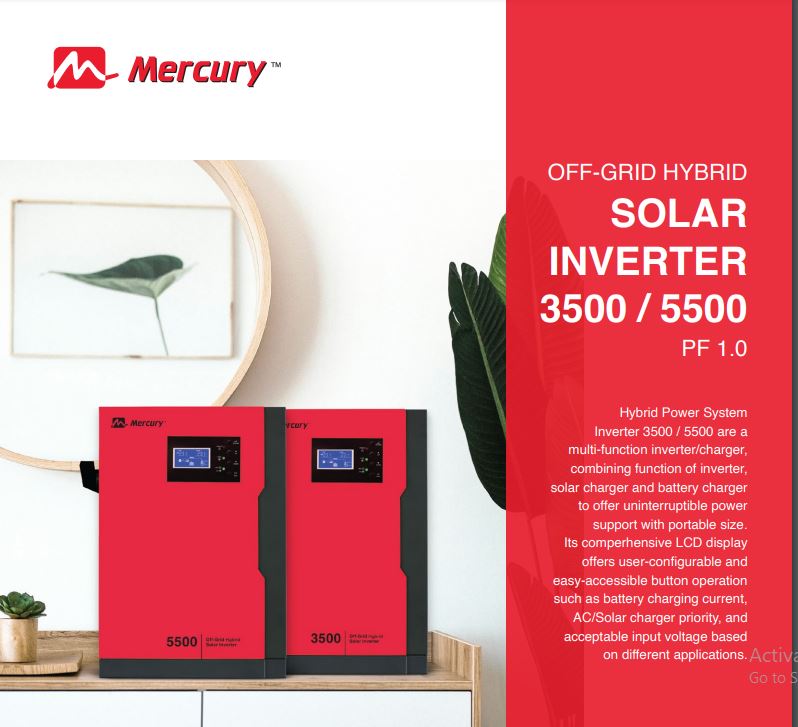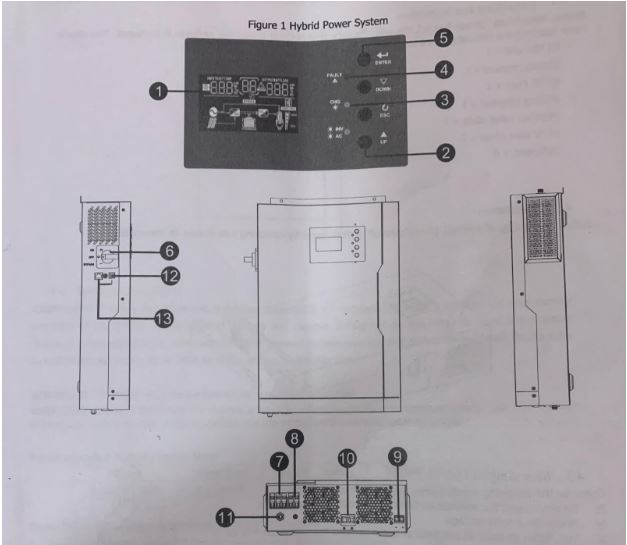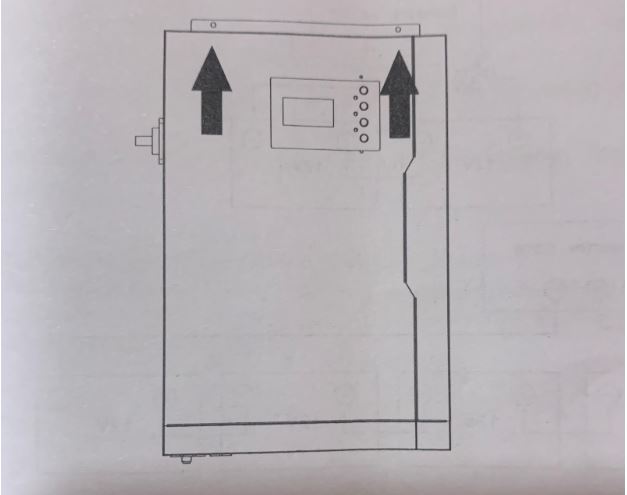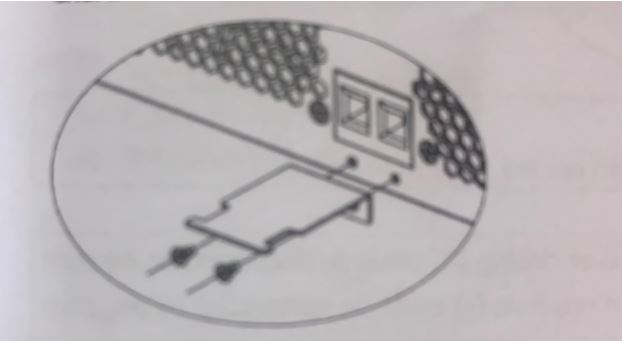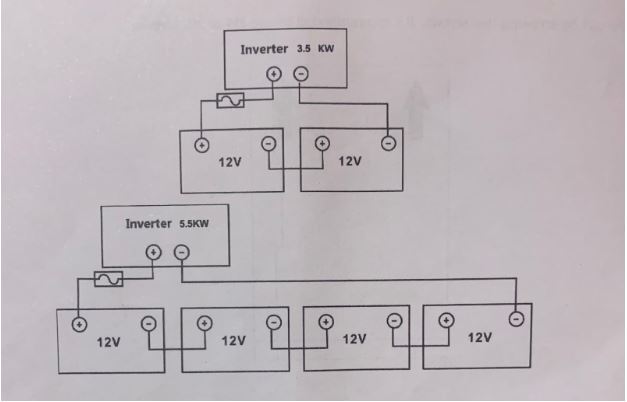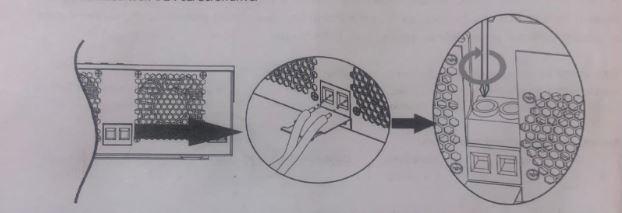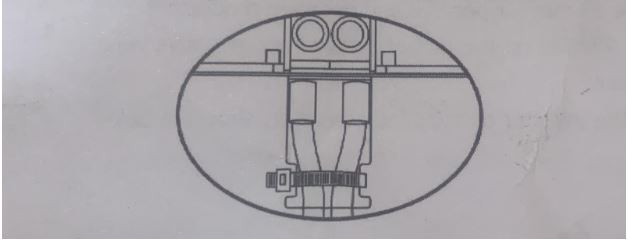Table of Contents
Mercury Solar Hybrid Inverter 3.5KVA and 5.5KVA User Manual
1 ABOUT THIS MANUAL
1.1 Purpose
This manual describes the assembly, installation. operation and troubleshooting of Mercury Solar Hybrid Inverters 3.5KVA and 5.5KVA. Please read this manual carefully before installations and operations. Keep this manual for future reference.
1.2 Scope
The Mercury Solar Hybrid Inverter 3.5KVA and 5.5KVA User Manual provides safety and installation guidelines as well as information on tools and wiring.
2 SAFETY INSTRUCTIONS
WARNING: This chapter contains important safety and operating instructions. Read and keep this manual for future reference.
1. Before using the unit, read all instructions and cautionary markings on the unit, the batteries and all appropriate sections of this manual.
2. CAUTION --To reduce risk of injury, charge only deep-cycle lead acid type rechargeable batteries. Other types of batteries may burst, causing personal injury and damage.
3. Do not disassemble the unit. Take it to a qualified service center when service or repair is required. Incorrect re-assembly may result in a risk of electric shock or fire.
4. To reduce risk of electric shock, disconnect all wirings before attempting any maintenance or cleaning. Turning off the unit will not reduce this risk.
5.. CAUTION - Only qualified personnel can install this device.
6. NEVER charge a frozen battery.
7. For optimum operation of this inverter/charger, please follow the required spec to select appropriate cable size. It's very important to correctly operate this inverter/charger.
8. Be very cautious when working with metal tools on or around batteries. A potential risk exists to drop a tool to spark or short circuit batteries or other electrical parts and could cause an explosion.
9. Please strictly follow the installation procedure when you want to disconnect AC or DC terminals. Please refer to the INSTALLATION section of this manual for the details.
10. One piece of 150A fuse is provided as overcurrent protection for the battery supply.
11. GROUNDING INSTRUCTIONS -This inverter/charger should be connected to a permanent grounded wiring system. Be sure to comply with local requirements and regulations to install this inverter.
12. NEVER cause AC output and DC input short circuited. Do NOT connect to the mains when DC input short circuits.
13. Warning! Only qualified service persons are able to service this device. If errors still persist after following the troubleshooting table, please send this inverter/charger back to the local dealer or service center for maintenance.
3 INTRODUCTION
This is a multi-function inverter/charger, combining functions of inverter, solar charger and battery charger to offer uninterruptible power support. Its comprehensive LCD display offers user-configurable and easy-accessible button operation such as battery charging current, AC/solar charger priority, and acceptable input voltage based on different applications.
3.1 Features
- Pure sine wave inverter.
- Configurable input voltage range for home appliances and personal computers via LCD setting.
- Configurable battery charging current based on applications via LCD setting.
- Configurable AC/Solar Charger priority via LCD setting.
- Compatible to mains voltage or generator power.
- Auto restart while AC is recovering.
- Overload/ Over temperature/ short circuit protection.
- Smart battery charger design for optimized battery performance.
- Cold start function.
3.2 Basic System Architecture
The following illustration shows basic application for this inverter/charger. It also includes following devices to have a complete running system:
- Generator or Utility.
- PV modules.
Consult with your system integrator for other possible system architectures depending on your requirements.
This inverter can power all kinds of appliances in home or office environments, including motor-type appliances such as tube light, fan, refrigerator and air conditioner.
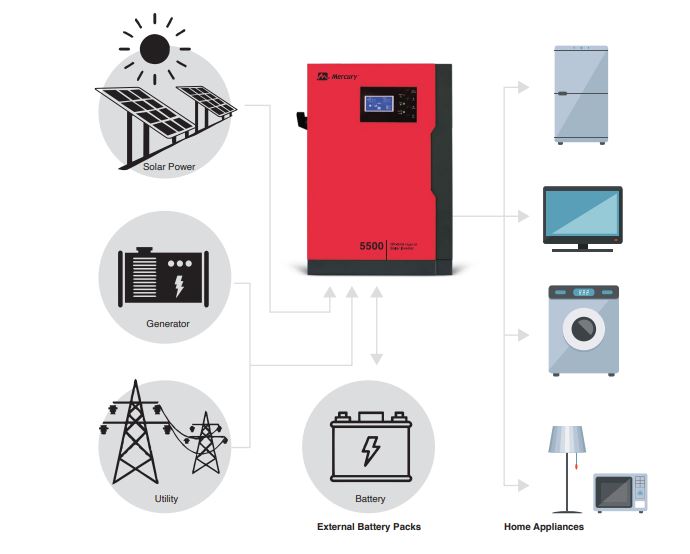
3.3 Product Overview
- LCD display
- Status indicator
- Charging indicator
- Fault indicator
- Function buttons
- Power on/off/bypass switch
- AC input
- AC output
- PV input
- Battery input
- Circuit breaker
- USB communication port
- RS-232 communication port
4 INSTALLATION
4.1 Unpacking and Inspection
Before installation, please inspect the unit. Be sure that nothing inside the package is damaged. You should have received the following items inside of package:
- The unit x 1
- User manual x 1
- DC Fuse x 1
- Ring terminal x 1
- Strain relief plate x 1
- PV wire cover x 1
- Screws x 4
4.2 Preparation
Before connecting all wirings, please take off bottom cover by removing two screws as shown below.
4.3 Mounting the Unit
Consider the following points before selecting where to install:
- Do not mount the inverter on flammable construction materials.
- Mount on a solid surface
- Install this inverter at eye level in order to allow the LCD display to be read at all times.
- For proper air circulation to dissipate heat, allow a clearance of approx. 20 cm to the side and approx. 50 cm above and below the unit.
- The ambient temperature should be between 0°C and 55°C to ensure optimal operation.
- The recommended installation position is to be adhered to the wall vertically.
- Be sure to keep other objects and surfaces as shown in the diagram to guarantee sufficient heat dissipation and to have enough space for removing wires.
SUITABLE FOR MOUNTING ON CONCRETE OR 0THER NON-COMBUSTIBLE SURFACE ONLY.
Install the unit by screwing two screws. It’s recommended to use M4 or M5 screws.
4.4 Battery Connection
CAUTION: For safety operation and regulation compliance it's requested to install a separate DC over-current protector or disconnect device between battery and inverter. It may not be requested to have a disconnect device in some applications, however, it's still requested to have over-current protection installed. Please refer to typical amperage in below table as required fuse or breaker size.
WARNING! All wiring must be performed by a qualified personnel.
WARNING! It's very important for system safety and efficient operation to use appropriate cable for battery connection. To reduce risk of injury, please use the proper recommended cable as below.
Recommended battery cable size:
Model Wire Size:
Please follow below steps to implement battery connection:
1. Remove insulation sleeve 18 mm for positive and negative conductors.
2. Suggest to put bootlace ferrules on the end of positive and negative wires with a proper crimping tool.
3. Fix strain relief plate to the inverter by supplied screws as shown in below chart.
4. Connect all battery packs as below chart.
5. Insert the battery wires flatly into battery connectors or inverter and make sure the bolts are tightened with torque of 2 Nm in clockwise direction. Make sure polarity at both the battery and the inverter/charge is correctly connected and conductors are tightly screwed into the battery terminals.
Recommended tool: #2 Pozi Screwdriver
6. To firmly secure wire connection, you may fix the wires to strain relief with cable tie.
WARNING: Shock Hazard
Installation must be performed with care due to high battery voltage in series.
CAUTION!! Before making the final DC connection or closing DC breaker/disconnector, be sure positive (+) must be connected to positive (+) and negative (-) must be connected to negative (-).
4.5 AC Input/Output Connection
CAUTION!! Before connecting to the AC input power source, please install a separate AC breaker between the inverter and AC input power source. This will ensure the inverter can be securely disconnected during maintenance and fully protected from over current of AC input. The recommended spec for 3.5KW and 50A for 5.5KW.
CAUTION!! There are two terminal blocks with "IN" and "OUT" markings. Please do NOT mis-connect input and output connectors.
WARNING! All wiring must be performed by qualified personnel.
WARNING! It's very important for system safety and efficient operation to use appropriate cable for AC input connection. To reduce risk of injury, please use the proper recommended cable size as below.
Suggested cable requirement for AC wires
Please follow below steps to implement AC input/output connection:
1. Before making an AC input/output connection, be sure to open the DC protector or disconnector first.
2. Remove the insulation sleeve 10mm for six conductors. And shorten phase L and neutral conductor N 3 mm.
3. Insert AC input wires according to polarities indicated on the terminal block and tighten the terminal screws. Be sure to connect the PE protective conductor first.
Ground (yellow-green)
L-LINE (brown or black)
N-Neutral (blue)
WARNING:
Be sure that the AC power source is disconnected before attempting to hardwire it to the unit.
4. Then, insert AC output wires according to polarities indicated on the terminal block and tighten terminal screws. Be sure to connect the PE protective conductor first.
Ground (yellow-green)
L-LINE (brown or black)
N-Neutral (blue)
5. Make sure the wires are securely connected.
CAUTION: Appliances such as air conditioner are required at least 2-3 minutes to restart because it's required
to have enough time to balance refrigerant gas inside of circuits. If a power shortage occurs and recovers in a short time, it will cause damage to your connected appliances. To prevent this kind of damage, please check the manufacturer of the air conditioner if it's equipped with a time-delay function before installation. Otherwise, this
inverter/charger will trigger overload fault and cut off output to protect your appliance but sometimes it still causes internal damage to the air conditioner.
4.6 PV Connection
CAUTION: Before connecting to PV modules, please install separately a DC circuit breaker between inverter
and PV modules.
WARNING! It's very important for system safety and efficient operation to use appropriate cable for PV
module connection. To reduce risk of injury, please use the proper recommended cable size as below.
PV Module Selection:
When selecting proper PV modules, please be sure to consider below parameters:
1. Open circuit Voltage (Voc) of PV modules does not exceed max. PV array open circuit voltage of inverter.
2. Open circuit Voltage (Voc) of PV modules should be higher than min. battery voltage.
Take the 250Wp PV module as an example. After considering the above two parameters, the recommended module configurations are listed as below table.
PV Module Wire Connection
Please follow below steps to implement PV module connection:
1. Remove the insulation sleeve 10 mm for positive and negative conductors.
2. Suggest to put bootlace ferrules on the end of positive and negative wires with a
proper crimping tool.
3. Flx PV wire cover to the inverter with supplied screws as shown in below chart.
4. Check correct polarity of wire connection from PV modules and PV input connectors. Then, connect positive
pole (+) of connection wire to positive pole (+) of PV input connector. Connect negative pole (-) of connection wire to negative pole (-) of PV input connector. Screw two wires tightly in clockwise direction. Recommended tool: 4mm blade screwdriver
4.7 Final Assembly
After connecting all wirings, please put the bottom cover back by screwing two screws as shown below.
4.8 Communication Connection
Wi-Fi cloud communication (option):
Please use the supplied communication cable to connect to the inverter and Wi-Fi module. Download APP and install it from the APP store, and Refer to "Wi-Fi Plug Quick Installation Guideline" to set up the network and register. The inverter status would be shown by mobile phone APP or webpage of computer.
GPRS cloud communication (option):
Please use the supplied communication cable to connect to the inverter and GPRS module, and then apply external power to the GPRS module. Download APP and install it from the APP store, and Refer to "GPRS RTU Quick Installation Guideline" to set up the network and register. The inverter status would be shown by mobile phone APP or webpage of computer.
5 OPERATION
5.1 Turn ON/OFF/BYPASS
Slide view of unit
Once the unit has been properly installed and the batteries are connected well, simply turn On/Off/Bypass switch (located on the side of the case) to turn on the unit
5.2 Operation and Display Panel
The operation and display panel, shown in below chart, is on the front panel of the inverter. It includes three indicators, four function keys and a LCD display, indicating the operating status and input/output power information.
5.3 LCD Display Icons
5.4 LCD Setting
After pressing and holding the ENTER button for 3 seconds, the unit will enter setting mode. Press "UP" or "DOWN" button to select setting programs. And then, press the "ENTER" button to confirm the selection or ESC button to ext.
Setting programs:
5.5 Display Setting
The LCD display information will be switched in turns by pressing the "UP" or "DOWN" key. The selectable information is switched as below order: input voltage, input frequency, PV voltage, charging current, charging power, battery voltage, output voltage, output frequency, load percentage, load in Watt, load in VA, load in Watt, DC discharging current, main CPU Version.
5.6 Operating Mode Description
5.7 Battery Equalization Description
Equalization function is added into the charge controller. It reverses the buildup of negative chemical effects like stratification, a condition where acid concentration is greater at the bottom of the battery than at the top. Equalization also helps to remove sulfate crystals that might have built up on the plates. If left unchecked, this condition, called sulfation, will reduce the overall capacity of the battery. Therefore, it's recommended to equalize the battery periodically.
° How to Apply Equalization Function
You must enable battery equalization function in monitoring LCD setting program 30 first. Then, you may apply this function in device by either one of following methods:
1. Setting equalization interval in program 35.
2. Active equalization immediately in program 36.
° When to Equalize
In the float stage, when the setting equalization interval (battery equalization cycle) is arrived, or equalization is active immediately, the controller will start to enter Equalize stage.
° Equalize charging time and timeout
In the Equalize stage, the controller will supply power to charge the battery as much as possible until battery voltage rises to battery equalization voltage. Then, constant-voltage regulation is applied to maintain battery voltage at the battery equalization voltage. The battery will remain in the Equalize stage until setting battery equalized time is arrived.
However, in the Equalize stage, when battery equalized time is expired and battery voltage doesn't rise to battery equalization voltage point, the charge controller will extend the battery equalized time until battery voltage achieves battery equalization voltage. If battery voltage is still lower than battery equalization voltage when battery equalized timeout setting is over, the charge controller will stop equalization and return to the float stage.
5.9 Warning Indicator
6 SPECIFICATIONS
Table 1 Line Mode Specifications
Table 2 Inverter Mode Specifications
Table 3 Charge Mode Specifications
7 TROUBLESHOOTING
8 Appendix: Approximate Back-up Time Table
Note: Back up time depends on the quality of the battery, age of battery and type of battery.
Specifications of batteries may vary depending on different manufacturers.

